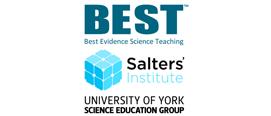- View more resources from this publisher
 Best Evidence Science Teaching
Best Evidence Science Teaching
Radioactive decay
These diagnostic questions and response activities (contained in the zip file) support students in being able to:
- Describe the effect of the electrostatic force within an atomic nucleus.
- Interpret nuclear equations to describe the alpha decay of radioactive nuclei.
- Describe what happens to an atom and its nucleus during an alpha decay.
- Explain why large nuclei with too many protons emit alpha particles rather than protons.
- Explain why a nucleus usually emits gamma radiation after an alpha decay.
- Restate, in own words, the reasons why a nucleus cannot be made of just neutrons.
- Interpret nuclear equations to describe the beta decay of radioactive nuclei.
- Describe what happens to an atom and its nucleus during a beta decay.
- Explain why a nucleus can often emit gamma radiation after a beta decay.
- Explain why the chances of beta decay increase with the proportion of neutrons to protons in a nucleus.
The resources include details of common misconceptions and a summary of the research upon which the resources are based.
Download the zip file for all the questions and activities.
More resources like this can be found on the BEST webpage: Best Evidence in Science Teaching
Show health and safety information
Please be aware that resources have been published on the website in the form that they were originally supplied. This means that procedures reflect general practice and standards applicable at the time resources were produced and cannot be assumed to be acceptable today. Website users are fully responsible for ensuring that any activity, including practical work, which they carry out is in accordance with current regulations related to health and safety and that an appropriate risk assessment has been carried out.
Downloads
-
Preview - Radioactive decay 1.03 MB
-
Key concept - Radioactive decay 18.11 MB




